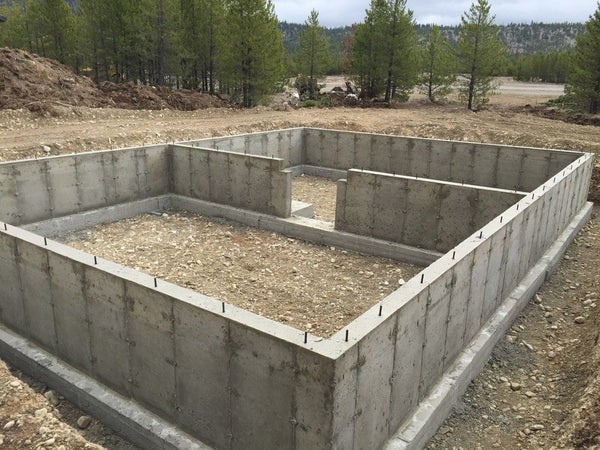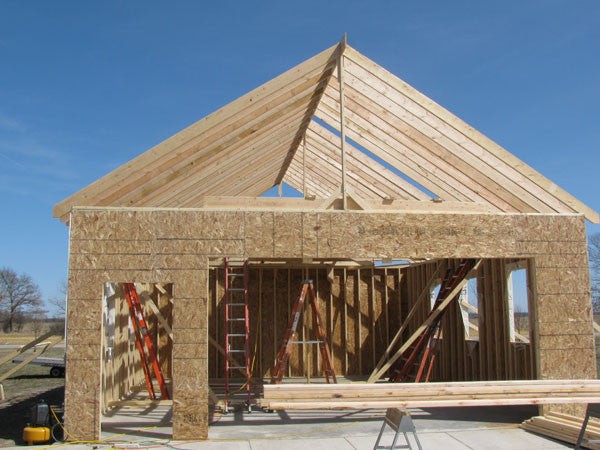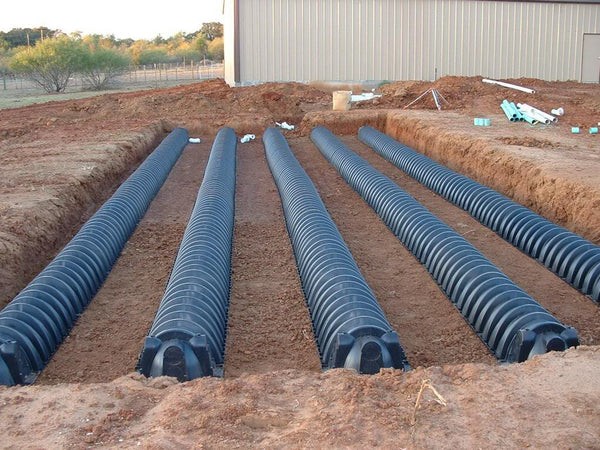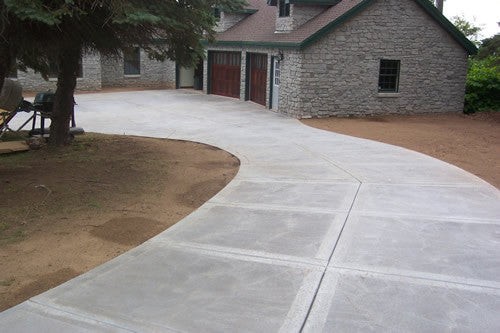Modular homes are gaining popularity as a cost-effective and efficient alternative to traditional stick-built homes. At HOW.EDU.VN, we understand that one of the primary concerns for potential homeowners is the price tag. This guide will provide a detailed breakdown of the costs associated with modular home construction, helping you make an informed decision. Discover how much a prefabricated house genuinely costs.
1. What Factors Influence the Cost of a Modular Home?
The final price of a modular home is influenced by various factors, including the size and design of the home, the materials used, the location of the building site, and any customizations or upgrades you choose. Understanding these elements can help you estimate the potential modular home cost and plan your budget accordingly.
1.1. Size and Floor Plan Complexity
The square footage of the modular home and the complexity of the floor plan play a significant role in determining the overall cost. Larger homes with intricate designs require more materials and labor, leading to higher expenses. Simple, open floor plans are often more cost-effective. According to a report by the National Association of Home Builders (NAHB), the average size of a new single-family home is around 2,356 square feet, but modular homes can range from small, affordable units to large, luxurious residences.
1.2. Materials and Finishes
The materials you select for your modular home, including the type of siding, roofing, flooring, and interior finishes, can significantly impact the cost. High-end materials like hardwood flooring, granite countertops, and premium siding will increase the price, while more affordable options like laminate flooring and vinyl siding can help you save money. The choices can make all the difference in the total modular home cost.
1.3. Location and Site Preparation
The location of your building site and the amount of site preparation required can also affect the cost of your modular home. If the land needs extensive clearing, grading, or excavation, you’ll need to factor in these additional expenses. Additionally, the cost of permits and inspections can vary depending on your location.
1.4. Customizations and Upgrades
One of the advantages of modular homes is the ability to customize the design to suit your specific needs and preferences. However, adding custom features like built-in cabinets, upgraded appliances, or unique architectural details will increase the overall cost. Consider which customizations are most important to you and prioritize them accordingly.
1.5. Delivery and Installation
The cost of delivering the modular home modules to your building site and installing them on the foundation is another factor to consider. This cost can vary depending on the distance from the factory to the site, the size and complexity of the modules, and the labor rates in your area.
2. Breaking Down the Costs: What’s Included in a Modular Home Price?
When evaluating the cost of a modular home, it’s essential to understand what’s typically included in the base price and what additional expenses you’ll need to budget for. The base price usually covers the cost of the modular home modules themselves, built to a standard set of specifications.
2.1. Home-Only Price
The “Home-Only” price refers to the cost of the modular home structure itself, as it sits at the factory, ready to be delivered to your lot. This price typically includes the walls, roof, windows, doors, and basic interior finishes. It’s important to note that the Home-Only price does not include delivery, installation, or any site-related costs.
2.2. Delivery and Setting
The cost of delivering the modular home modules to your building site and setting them on the foundation is a separate expense. This cost depends on the distance from the factory to your site, the size and weight of the modules, and any special equipment required for the delivery and setting process.
2.3. Turn-Key Service
Some modular home builders offer a “Turn-Key Service,” which includes all the necessary steps to complete your modular home, from foundation to finish. This service typically covers the cost of site preparation, foundation construction, utility hookups, interior and exterior finishing work, and any required permits and inspections. While a Turn-Key Service is more expensive than purchasing the Home-Only, it can provide peace of mind and simplify the building process.
3. What are the Additional Costs to Consider?
In addition to the base price of the modular home, there are several additional costs to consider when planning your budget. These costs can vary depending on your location, the condition of your building site, and your personal preferences.
3.1. Foundation Costs
Modular homes require a solid foundation to be set on. The type of foundation you choose (basement or crawlspace) will impact the overall cost.
-
Basement: A poured basement with 8-foot walls, an egress window, insulation, and stairs can cost between $35,000 and $40,000 for a 1,600 SF ranch home. This includes excavation, backfill, footers, walls, waterproofing, sump pit, drain tile, basement floor, sill plates, and an egress window.
-
Crawlspace: A block crawlspace around 4 feet deep, including an access panel and foam board insulation, typically adds $18,000 to $20,000 to your modular home cost for a 1,600 SF ranch home. This includes excavation, backfill, footers, walls, damp proofing, sump pit, drain tile, sill plates, and an access door/well.
3.2. HVAC System Costs
A full HVAC system install, including the furnace, AC, air ducts, and gas lines, generally costs between $10,000 and $15,000 for a 1,600 SF ranch home.
3.3. Garage Costs
A simple 22X22 attached garage, including the garage door and opener, siding/roofing, and concrete work, can add $23,000 to $25,000 to your modular home cost.
3.4. Water and Sewer Costs
The cost of connecting to a city water supply or drilling a private well, as well as connecting to a city sewer system or installing a septic system, can vary significantly depending on your location.
-
Well: A drilled well that is 60 feet deep, including the bladder tank and water line hookups, can add $5,000 to $7,000 to your modular home cost.
-
Septic System: A standard “in-ground” septic system with a single tank and leach field in good soil typically costs between $7,000 and $9,000.
3.5. Electrical and Gas Service Costs
Installing an electric “meter base” on the home and running the line from the outside meter base into your home’s electric panel can add $4,000 to $6,000 to your modular home cost. If your home uses natural gas, you’ll also need to factor in the cost of a gas meter and gas lines.
3.6. Building Permit Costs
Building permit costs can fluctuate from a low of $500 to as high as $4,000, with an average around $1,200.
3.7. Driveway Costs
The cost of a driveway depends on the material you choose.
- Concrete: $5 to $6 per square foot for a 4-inch thick drive.
- Gravel: $6 to $8 per running foot of drive for a 10-foot wide drive.
3.8. Miscellaneous Charges
Other potential charges include general contractor fees, gutters, lawn grading, and other site-specific expenses.
4. Sample Modular Home Cost Estimate
To give you a better idea of the potential cost of a modular home, here’s a sample estimate based on a 1,493 SF Ranch Home:
| Item | Cost |
|---|---|
| Ranch Home 1,493 sq. ft. | $132,682 |
| Foundation: Poured Basement | $38,769 |
| HVAC | $9,500 |
| Private Well | $5,500 |
| Standard In-Ground Septic System | $7,500 |
| PVC Drains & Misc Plumbing | $5,100 |
| Electrical Service | $5,800 |
| Miscellaneous | $38,900 |
| Total Price | $243,751 |





5. How Does Modular Home Cost Compare to Traditional Stick-Built Homes?
One of the primary advantages of modular homes is their cost-effectiveness compared to traditional stick-built homes. On average, a modular home costs 15% less than its stick-built counterpart. The modular construction process, which involves building the home in a controlled factory environment, allows for greater efficiency, reduced waste, and lower labor costs.
5.1. Cost Savings
While the average price for a stick-built home can range from $190 to $250 per square foot (and even higher in some areas), modular homes typically cost between $100 and $200 per square foot. This can result in significant savings, especially for larger homes.
5.2. Quality and Value
Despite the lower cost, modular homes do not sacrifice quality or value. They are built to the same building codes and standards as stick-built homes and can be customized to meet your specific needs and preferences. In fact, some studies have shown that modular homes can appreciate in value at the same rate as stick-built homes in the same neighborhood.
6. How to Reduce the Cost of Your Modular Home Project
If you’re looking to save money on your modular home project, there are several strategies you can employ.
6.1. Choose a Simple Floor Plan
Opting for a simple, open floor plan can reduce material and labor costs. Avoid complex designs with lots of angles or custom features.
6.2. Select Affordable Materials
Choosing more affordable materials like laminate flooring, vinyl siding, and standard appliances can help you save money without sacrificing quality.
6.3. Minimize Customizations
Limiting the number of customizations and upgrades you choose can significantly reduce the overall cost of your modular home.
6.4. Do Some of the Work Yourself
If you’re handy, you can save money by doing some of the work yourself, such as painting, landscaping, or installing flooring. However, be sure to check with your local building codes and permit requirements before undertaking any DIY projects.
6.5. Shop Around for Financing
Getting quotes from multiple lenders can help you find the best interest rate and loan terms for your modular home project.
7. Debunking Myths About Modular Home Costs
There are several common misconceptions about the cost of modular homes. Let’s debunk some of these myths:
7.1. Myth: Modular Homes Are Always Cheaper
While modular homes are generally more cost-effective than stick-built homes, the final price depends on various factors, including the size and design of the home, the materials used, and the location of the building site.
7.2. Myth: Modular Homes Are Low-Quality
Modular homes are built to the same building codes and standards as stick-built homes and can be customized to meet your specific needs and preferences.
7.3. Myth: Modular Homes Depreciate in Value
Studies have shown that modular homes can appreciate in value at the same rate as stick-built homes in the same neighborhood.
8. Modular Home Financing Options
Financing a modular home is similar to financing a traditional stick-built home. You’ll typically need to obtain a construction loan to cover the cost of the modular home and the site-related expenses. Once the home is completed, you can refinance the construction loan into a permanent mortgage.
8.1. Construction Loans
Construction loans are short-term loans that cover the cost of building a home. They typically have higher interest rates than permanent mortgages and require you to make interest-only payments during the construction period.
8.2. Permanent Mortgages
Permanent mortgages are long-term loans that are used to finance the purchase of a completed home. They typically have lower interest rates than construction loans and require you to make principal and interest payments.
8.3. Government-Backed Loans
Government-backed loans, such as FHA and VA loans, can be used to finance modular homes. These loans typically have lower down payment requirements and more lenient credit requirements than conventional loans.
9. Finding the Right Modular Home Builder
Choosing the right modular home builder is crucial to ensuring a successful project. Look for a builder with a proven track record of building high-quality modular homes and a commitment to customer satisfaction.
9.1. Research and Reviews
Research potential builders online and read reviews from past customers. Look for builders with positive reviews and a reputation for quality workmanship.
9.2. Experience and Expertise
Choose a builder with experience building modular homes in your area. They should be familiar with the local building codes and permit requirements.
9.3. Customization Options
Make sure the builder offers the customization options you need to create the modular home of your dreams.
9.4. Warranty and Support
Ask about the builder’s warranty and support policies. They should offer a comprehensive warranty on their workmanship and materials.
10. Optimizing Your Modular Home for Resale Value
If you’re planning to sell your modular home in the future, there are several things you can do to optimize its resale value.
10.1. Choose a Desirable Location
Location is one of the most important factors in determining a home’s resale value. Choose a location in a desirable neighborhood with good schools and convenient access to amenities.
10.2. Invest in Quality Materials
Investing in quality materials and finishes will help your modular home stand the test of time and appeal to potential buyers.
10.3. Maintain Your Home
Regular maintenance is essential to preserving your modular home’s value. Keep the exterior clean and well-maintained, and address any repairs promptly.
10.4. Landscape Your Yard
Landscaping can significantly enhance your home’s curb appeal and increase its resale value.
10.5. Stay Up-to-Date with Trends
Staying up-to-date with the latest home design trends can help you keep your modular home looking fresh and modern.
11. The Future of Modular Home Costs
The modular home industry is constantly evolving, with new technologies and construction methods emerging all the time. As the industry continues to innovate, we can expect to see even greater cost savings and efficiency gains in the future.
11.1. Automation and Robotics
The use of automation and robotics in modular home construction is increasing, which can further reduce labor costs and improve efficiency.
11.2. Sustainable Materials
The demand for sustainable building materials is growing, which can lead to new and innovative materials that are both environmentally friendly and cost-effective.
11.3. 3D Printing
3D printing technology is being explored as a potential method for building modular home components, which could revolutionize the industry and significantly reduce costs.
12. Frequently Asked Questions (FAQs) about Modular Home Costs
Here are some frequently asked questions about modular home costs:
- What is the average cost of a modular home? The average cost of a modular home ranges from $100 to $200 per square foot.
- Are modular homes cheaper than stick-built homes? Yes, modular homes are generally 15% cheaper than stick-built homes.
- What additional costs should I consider when budgeting for a modular home? Additional costs include foundation, HVAC system, garage, water and sewer connections, electrical and gas service, building permits, and driveway.
- How can I reduce the cost of my modular home project? You can reduce costs by choosing a simple floor plan, selecting affordable materials, minimizing customizations, and doing some of the work yourself.
- Do modular homes depreciate in value? No, studies show that modular homes can appreciate in value at the same rate as stick-built homes.
- Can I finance a modular home? Yes, you can finance a modular home with a construction loan and a permanent mortgage.
- How do I find a reputable modular home builder? Research builders online, read reviews, and choose a builder with experience and expertise.
- Are modular homes built to code? Yes, modular homes are built to the same building codes and standards as stick-built homes.
- What is the difference between modular and manufactured homes? Modular homes are built to the same building codes as site-built homes, while manufactured homes are built to a federal code.
- Can I customize a modular home? Yes, modular homes can be customized to meet your specific needs and preferences.
Building a modular home can be a cost-effective and efficient way to achieve your homeownership dreams. By understanding the factors that influence modular home cost, comparing it to the cost of a stick-built house and carefully planning your budget, you can make informed decisions and ensure a successful project.
Ready to Build Your Dream Modular Home?
At HOW.EDU.VN, we connect you with experienced professionals who can guide you through every step of the modular home building process. Do you find it challenging to navigate the complexities of modular home construction? Are you seeking expert advice to make informed decisions and avoid costly mistakes?
Don’t let the complexities of modular home construction overwhelm you. Let our team of over 100 renowned Ph.Ds and experts at HOW.EDU.VN provide you with the personalized guidance you need to build the perfect modular home. We address the challenges of finding qualified professionals, securing reliable advice, and ensuring a smooth construction process.
Contact us today to schedule a consultation and discover how we can help you achieve your homeownership goals. We are located at 456 Expertise Plaza, Consult City, CA 90210, United States. You can also reach us via Whatsapp at +1 (310) 555-1212 or visit our website at how.edu.vn.